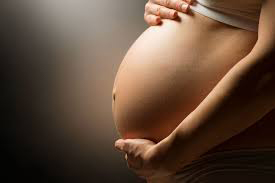Acupuncture for Labor Induction
Acupuncture for Labor Induction and Pre-birth Acupuncture – What’s the Difference?

Clinically I see a number of women each week towards the end of pregnancy who are keen to try to avoid a medical induction, and others who want to minimise the chance of losing their place in our local hospital midwifery program at 42 weeks. So I do tend to do a do a mix of labor induction and pre-birth acupuncture each week. But what is the difference?
Prebirth Acupuncture is a gentle and relaxing treatment usually commenced at 36 weeks with a treatment each week until the baby is born, usually 5 to 6 treatments in total. While treatments are individualised according to both her constitution and any present concerns of the mother, generally they will include points to aid cervical ripening, ensure pelvic alignment and help the mother to feel relaxed and calm, as stress can inhibit the hormones necessary for the commencement of labor. This is also a great opportunity to help to address some of the discomforts of late pregnancy, like sciatic, back, or hip pain, haemorrhoids, muscle cramps, (I could go on!) as well as assisting feelings of overwhelm or anxiety that can arise around this major life transition. The research, while limited, on pre-birth acupuncture does support what we see clinically, the acupuncture groups have fewer medical inductions, reduced rates of epidurals and emergency c sections[1] and a reduction in the length of labor when compared to the control[2]. However, much more research is required in this area for us to really determine the benefits.
Induction acupuncture tends to be a much stronger style of treatment. The aim of treatment is to get labor to start as quickly as possible, rather than the more subtle approach of preparing the body over several weeks. There are many things that could be discussed in relation to this – the wisdom of any form of interference in the natural birth process, whether we can really start things before the body and baby are ready, and other interesting points that are out of the scope of this article. At the end of the day if a woman has made an informed choice to try to induce her labor then acupuncture can be a helpful modality to try and get things moving. It can take a few treatments until a woman will get into established labor, often 2 or 3 within a short space of time, to really get things moving. However, if you have had pre-birth acupuncture and you still start heading to 42 weeks, then it does tend to be a little easier to get labor started with an induction treatment. Treatment includes some of the points used in pre-birth acupuncture, as well as some additional points to encourage uterine contractions to commence. I also use much stronger stimulation in these treatments, and will sometimes even use electro-stimulation of some points.
Generally I would recommend pre-birth acupuncture where possible. There is wisdom in gently encouraging efficient and optimal hormonal cascade to support our natural process over trying to override things. For both treatments there are supportive activities you can do at home to really encourage things along. Activities such as acupressure, walking, nipple stimulation and others all tend to be cumulative and will build on each other supporting the desired hormones to flow and encourage readiness for labor as well as efficiency in the labor process. This is a worksheet I give out to my clients with some suggestions of activities to undertake at home. They can be done in both instances, the frequency and intensity can be varied according to whether you are wanting to gently prepare your body or really get things moving.
In addition to single treatments for both prebirth and labor
induction, I am now also offering an Ultimate Pregnancy Package for those
wanting to use acupuncture to help with birth preparation & post birth
nourishment of new mother. This new package includes 5 to 6 one hour sessions
to prepare for birth, 2 vaginal herbal steam treatments to help prepare the
pelvis and perineum, 2 postpartum ‘mother warming’ sessions to nourish and
enhance healing after the birth and a further 2 vaginal herbal steams to aid
pelvic recovery.
[1] Betts D, Lennox S. Acupuncture for prebirth treatment: An observational study of its use in midwifery practice. Medical acupuncture 2006 May; 17(3):17-20
[2] Kubista E Kucera H. Geburtshilfe Perinatol. 1974; 178 224-9
